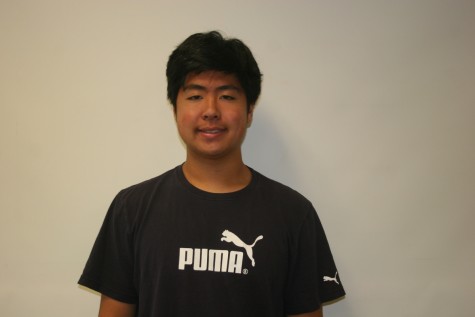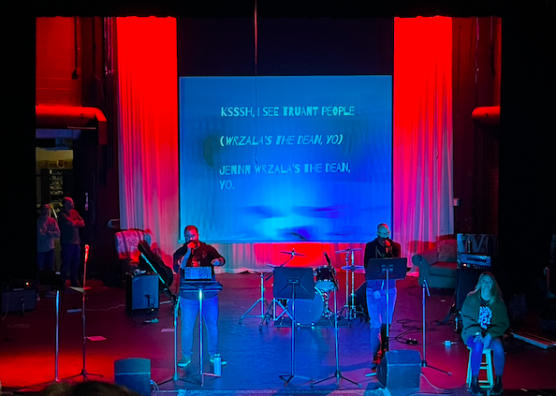Lou Gehrig’s disease: Spotlight on ALS

Lou Gehrig in 1936. Internet photo courtesy of The New York Times.
October 1, 2014
Despite the overwhelming amounts of money the ALS association has received from their “ice bucket challenge” fundraising drive, ALS still remains a vague disease to many Americans today.
According to John Hopkins Medicine, ALS, or Amyotrophic Lateral Sclerosis, is defined as “a progressive neuromuscular disease characterized by a progressive degeneration of motor nerve cells in the brain and spinal cord”. The hospital also mentions that ALS is common within ages 40 to 70, but can occur at a younger or older age as well. The disease is estimated to be responsible for five out of one hundred thousand deaths in people aged 20 or older. and affects as many as thirty thousand Americans, with five thousand new cases each year.
Health department chair Jason Jetel describes the physical signs of the disease.
“The initial symptoms of ALS can vary case by case, and person by person. Un-coordination, weakness in the extremities, slurred speech may be initial symptoms and can be overlooked as they gradually appear. The hands and feet may be the first area affected by ALS and a person may find it to be difficult to complete everyday tasks such as walking, lifting items, dressing, etc. Shaking of the limbs and head are often seen as well,” Jetel said. “As the disease progresses, muscle weakness and paralysis is the typical experience. Speech, chewing, swallowing and breathing become increasingly difficult as the disease continues to weaken the muscles of the core and abdomen. This disease attacks motor neurons and typically does not affect sensory neurons. Occasionally, the progression may cease or even remit, but experts are unsure why.”
ALS is also noted as a common disease all around the world and is not affected by race or socioeconomic background. Reports of ALS date back to 1860 but to this day, no cure has been created.
For Jetel, the disease touched people he knows personally.
“My grandfather developed the disease after experiencing a stroke,” Jetel said. “A former neighbor and good friend has been battling ALS for about 10 years – the first two or three of which they had a difficult time diagnosing the disease.”
One of the most famous cases of ALS is baseball all-star Lou Gehrig, who played first alongside Babe Ruth on the New York Yankees. Halfway through the 1938 season, Gehrig reported severe fatigue during games, and his performance dropped drastically. Fans speculated the reason for the baseball giant’s demise, but it was later confirmed as ALS when Gehrig received diagnosis results from the Mayo Clinic on June 19, 1939, his 36th birthday. Gehrig retired two days later and his health deteriorated for the next two years. Finally, on June 2, 1941, Gehrig succumbed to the disease. This famous case gained ALS the nickname “Lou Gehrig’s disease”.
In 1985, nearly 40 years later, the ALS Association, or ALSA was formed. Created by Jane H. Gilbert as a non-profit organization, the association works in developing a cure for the disease as well as educating the general public on what the disease is and offering referrals to doctors and help for victims of the disease. The association also holds fundraisers to raise revenue for cure research, which includes an annual “Walk to Defeat ALS” and the Ice Bucket Challenge. Nevertheless, the cure has yet to be discovered.
Jetel describes what little information has been learned so far in terms of cure research.
“Scientists have found genetic mutations in various genes that seem to be common through many patients. In addition, scientists are also looking into environmental causes such as exposure to toxic substances, physical trauma, occupational hazards, etc.” Jetel said. They have also found that many veterans of the first Gulf War in the early ’90s developed the disease at a higher rate than those who were not in the Gulf. So, not knowing a specific cause has probably delayed a cure for ALS.”
This does not rule out the possibility of there one day being a cure however. The recently discovered field of stem cell research may yield some information on the causes of the disease. Using stem cells extracted from embryonic caviars, researchers can treat the cells to reverse their aging and discover developmental stages of ALS. The research has been criticized for being inhumane by using deceased embryos as well as being extremely expensive, however, the ALSA’s recent fundraisers are likely to take care of that.
Sophomore Daniel Peterson considers the Ice Bucket Challenge a success because of the money raised for cure research.
“Yes, I do think it is a success, even though I think it didn’t raise enough awareness,” Peterson said. “I definitely think it raised enough money for the cure.”



